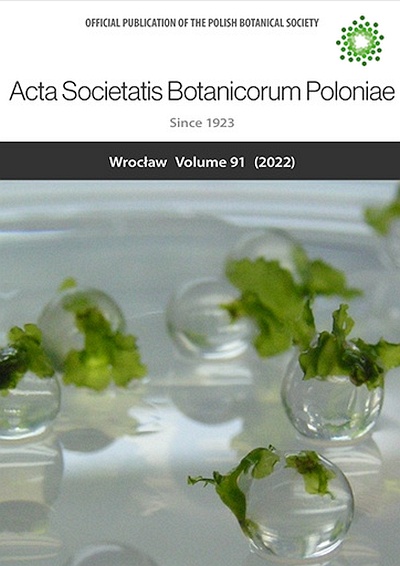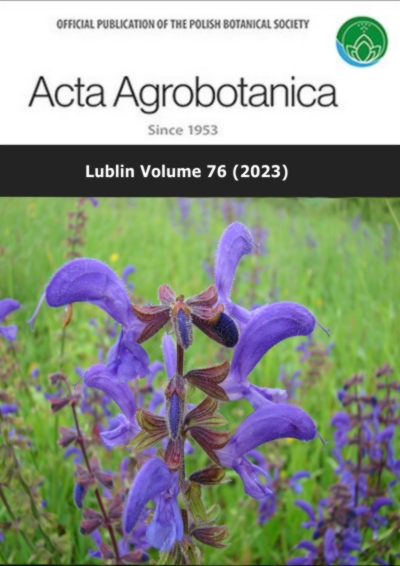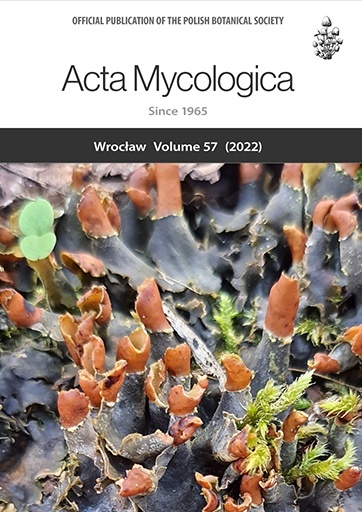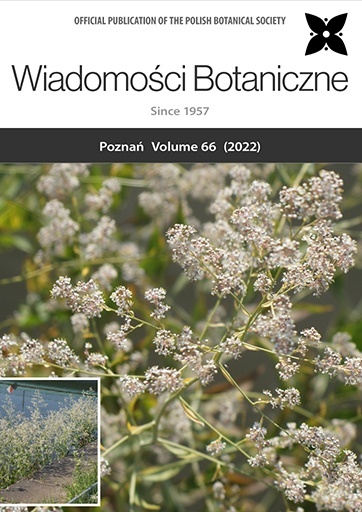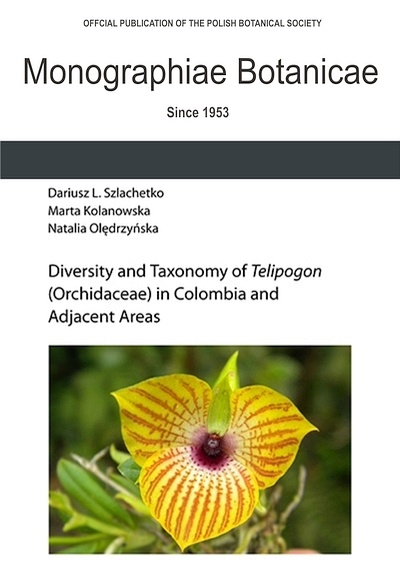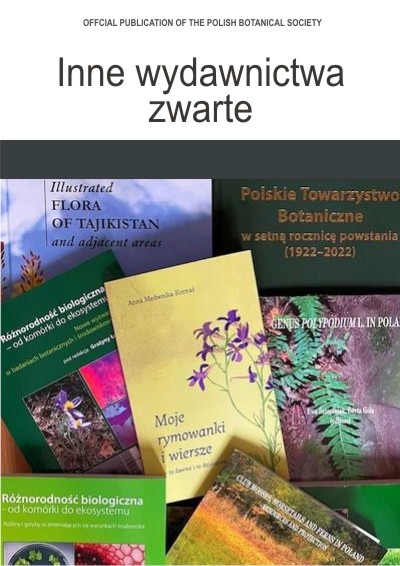Timeline
The review of the hundred-year history of the Polish Botanical Society (in Polish: Polskie Towarzystwo Botaniczne, PTB) shows that the statutory goal of its activity – the development of plant science – is still valid. The ways of implementation of the objective vary, as they are influenced by the country’s social and economic conditions, political changes, reorganization of science management, and technological progress. The determination of successive Presidents, their vision of the future, and the ability to set new directions for development of the Society as well as the enormous social commitment of its members are the basis for the functioning and continuous development of the Society.
The Polish Botanical Society was established on April 9, 1922, at the founding convention in Warsaw. Prominent botanists from Polish cities with the oldest university traditions of that time – Cracow, Lviv, Vilnius, and Warsaw initiated the establishment of the Society. This was preceded by almost a decayed of famous Kraków botanical seminars started by Prof. Marian Raciborski and, after his death (in 1917), continued by Prof. Władysław Szafer. These seminars played an important informational role and were a place of scientific discussions. In addition, they turned out to be the basis for the future national-scale Society. At that time, the scientific life in Warsaw suppressed for years by the politics of invaders and russification was only beginning to organize. It flourished rapidly after Poland regained independence in 1918 and concentrated around Professors Zygmunt Wóycicki, Bolesław Hryniewiecki, and Kazimierz Bassalik (all returned to their homeland in 1919) and their students. The activity of scientists from the University of Warsaw was strongly supported by Professors Edmund Malinowski (geneticist and Wincenty Siemaszko (phytopathologist) from the Warsaw University of Life Sciences. The Poznań center is also worth mentioning, where an important role in Polish botany was played by Prof. Bronisław Niklewski (plant physiologist). Members of the Polish Academy of Arts and Sciences (in Polish: Polska Akademia Umiejętności, PAU) were a great support for organizing the Society: Emil Godlewski (plant physiologist; vice-president of PAU) and Józef Rostafiński (pioneer of Polish floristry), who became its first honorary members on the day the PTB was established.
Regional divisions of the Society were set up in Cracow, Lviv, Vilnius, and Warsaw in the very beginning. The Poznań division was formally sanctioned before the World War II as well. The activity of the Lviv and Vilnius divisions was discontinued after the war due to the change of Poland’s borders. Currently, the Society operates in 15 regional divisions, including the youngest Skierniewicki division established in 1981. Since 1950, specialist sections have evolved in the structure of the Society along with the development of botanical sciences and their various specialties. Activity in this area was initiated by dendrologists who formed the Dendrological Section. The youngest fifteenth section, i.e., the Plant Taxonomy Section, was established in 2014. Due to such a two-tier structure, the activity of the Society’s members covers the whole Poland and popularizes all areas of dynamically developing botany in its broad sense.
A special form of scientific activity of the Society is organization of nationwide congresses, and their main goal is to integrate the Polish botanical community. They are a place for the exchange of scientific ideas and making friendships, which often become a permanent part of not only the professional life but also the private life of the participants. Field sessions, a great specificity of the congresses, follow the lecture part and take botanists to the most interesting and the most beautiful nature sites in Poland. The impact of the congresses is best summarized by numbers. So far, 58 congresses have been held, with 13,160 participants in 37 of them. In total, 6,752 scientific presentations were given during 49 congresses. During opening ceremonies of each congress, awards are given to researchers who have contributed significantly to the development of botanical sciences in Poland and in the world. The Society awards three types of medals: Prof. Władysław Szafer Medal (awarded to authors of botanical works of outstanding scientific value), Prof. Bolesław Hryniewiecki Medal (in recognition of the development and dissemination of botanical knowledge), and Prof. Zygmunt Czubiński Medal (for outstanding regional geobotanical monographs). Distinctions to young, outstanding scientists are awarded as well. During these ceremonies, individuals with eminent contributions to botany, related sciences, and the Society are awarded the honorary membership of the Society. Over the past hundred years, the Society conferred the title of honorary member on 104 Polish and 66 foreign botanists.
Publication of scientific journals and books was one of important activities of the PTB. It was initiated in 1923 by issuing Acta Societatis Botanicorum Poloniae (ASBP), which has been published regularly to date. In 1951, the first issue of the Society Dendrological Section Annual was released and 2 years later other journals were established: Acta Agrobotanica (AA), Monographiae Botanicae (MB), Fragmenta Floristica et Geobotanica, and Biuletyn Ogrodów Botanicznych (Bulletin of Botanical Gardens). In 1957, permission and funds were obtained to publish Wiadomości Botaniczne (Botanical News), and Acta Mycologica (AM) was established in 1965. In 1990–1998, the Society published another periodical entitled Erica. Annual of Briar Plants.
In the period from 1951 to 1990, the publishing of the Society journals was financially and organizationally dependent on Polish Academy of Sciences. The financing of this activity was taken over by the Scientific Research Committee in 1991 and by the Ministry of Science and Higher Education in 2006. Despite the guarantee of relative financial stability for the next 10 years, Poland lost many excellent Polish scientific journals during this period, which were taken over by foreign publishers (Springer, Elsevier) or were closed down due to more strict criteria for granting funds. The Polish Botanical Society continues its publishing activity, and 5 periodicals (ASBP, AA, AM, WB, and MB) and occasionally monographs were published in the last years. Since 2010, a thorough modernization of the publishing process has been implemented, e.g., software for handling manuscripts and open access to scientists from around the world. The modernization also included the implementation of the anti-plagiarism system, the English-language proofreading service, and the ethical rules of conduct.
The implementation of the XML JATS format providing more efficient indexing of papers in 2020 made the Society a member of the global group of publishers and at the same time a pioneer in this field on the Polish market. In 2021, the journals switched to a continuous mode of publishing articles, which are now available in the world’s most important indexing databases (Scopus, DOAJ, Clarivate). Being a publisher, the Society belongs to such international organizations as the Open Access Scholarly Publisher Association and the Committee on Publication Ethics. In 2020, the Society publications were awarded the DOAJ Seal for journals that meet high publishing standards.
The modernization process also covered other areas of the Society’s activity. In addition to the Publishing Platform, a new PTB website was created. In 2018, the Society repository was set up, where the most important documents and papers related to the history and scientific activity of the members are archived and made available. The repository also collects and disseminates electronic versions of the Society archival publications, which were digitized successively in 2011–2017.
As soon as it was established, the Society founded its own library, which gathered its collections through domestic and foreign exchange, donations, and subscriptions. Over decades, the library was active in collecting, developing, and sharing the book collection as well as exchanging and distributing journals. After 2000, due to the lack of financing from the Government and as a result of technological changes, the role of the traditional library has drastically decreased. The digitization of archival publications of PTB, completed in 2017, their availability in the open access system, and the change in the mode of publishing journals from printed to the digital form resulted in suspension of the interlibrary exchange in 2015. In 2019, the collection underwent a thorough selection and the remaining books were moved to the library’s new location in the Botanical Garden of the University of Warsaw. Active sharing of publications and other PTB collections is currently being carried out mainly through the digital repository.
Despite the turbulent, rich history and changes that the Polish Botanical Society underwent during its existence, it still fulfils the tasks of supporting scientific activity, disseminating knowledge, publishing journals and books, and giving opinions and advice. These tasks are carried out via organization of congresses, conferences, scientific meetings, expeditions, lectures, and meetings popularizing botanical knowledge. Part of the statutory activity has gradually moved to the Internet, and the activities of the Society are now visible all over the world. The Society appreciates and distinguishes the scientific achievements of Polish botanists and rewards the most outstanding discoveries that make a significant contribution to the national and world science.
